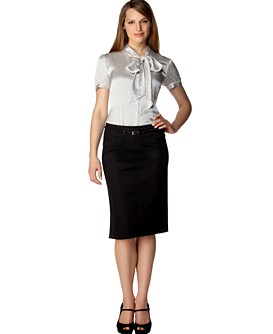Do we need manners?
In raising children, each generation re-evaluates what they were taught. Some items are retained, others are cast aside as "something from the past" needing modernization. One such area deserving closer scrutiny is manners. Unfortunately, some baby boomer-era parents have cast manners aside. Those parents often later regret having taken such actions.
In looking at manners, there are two types to consider. There are external manners, otherwise known as "etiquette" and internal manners which deal with respecting other people.
Children can be readily taught etiquette. Many of the rules we learned at home, in pre-school and church deal with forms of etiquette. Practicing etiquette does not guarantee success in the world, yet it does make the one's pathway through life smoother. Etiquette is required in dealing with the legal system, medical services, education, the military and public services. If you don't believe there is etiquette in such places, try cutting in line at a public service agency or the driver's license office.
Although some social circles consider 'yes sir', 'yes ma'am' and other niceties of etiquette archaic, such manners lead to positive impressions. Children practicing good manners stand out even more in the current social climate. It is not by accident that customer service programs often focus on training employees in etiquette. The fact that companies spend money on such training programs is evidence of the importance of etiquette.
Internal manners or respect for others is more difficult to achieve. Of the two types of manners, this one is most important to master. Etiquette practiced without respect comes across as sarcastic of condescending. A prime example is Eddie Haskell's behavior toward Mrs. Cleaver in the television show, "Leave it to Beaver."
Training children in respecting others consists of developing an attitude of considering other people and their relationship with them. "Respect" acknowledges that the other person exists and is worthy of recognition. Such an attitude develops with questions that have the child look at situations from different perspectives. Questions such as "What would Mr. Joseph think if you did that?" or "How might Mrs. Davis feel about what you did?" force them to consider other viewpoints. As humans, we are naturally selfish and such questions stretch us beyond our limited view of situations. Such questions also force us to stop and think. Encourage your children to do the following:
* Having them write thank you notes for acts of kindness, which helps them consider other
people.
* When reading stories, help them try to look at the events from the viewpoints of the different
characters involved.
When the attitude of respecting others is learned, then behavior toward others changes as a natural by-product. Once such a change occurs, the practice of etiquette will be from the heart. Manners are needed in today's society, yet more important is the attitude behind the practice of social etiquette.
Source











